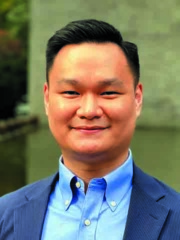You Want to Increase Productivity? Focus on Employee Wellness
ChapmanCG and partnering HR leaders gathered at J&J’s funky offices in Kuala Lumpur, Malaysia seated on brightly coloured bean bags surrounded by yoga studios, foosball tables and all things that mark a modern work environment to discuss HR’s role in employee wellness.
We were joined by HR leaders from 3M, Alliance for Financial Inclusion, AstraZeneca, Bursa Malaysia, Elanco, Ericsson, Gentle Supreme, GlaxoSmithKline, Goodyear, Heineken, Jacobs Engineering Group, Nestle, Novo Nordisk, PricewaterhouseCoopers, Scania and Standard Chartered Bank.

There’s plenty of research that confirms healthy employees lead to an increase in productivity, thusly having a direct impact on the bottom line. At J&J health and wellness is part of their DNA. They have a vision to have the world’s healthiest workforce by 2020, and while that may be an ambitious target, they’re well on the way to enabling longer, healthier and happier lives for their employees.
The focus for J&J is on healthy behaviours, which they believe are key to driving change. They have a team of 300 individuals who form part of their Global Health Services. The team consists of doctors, nurses, therapists, and trainers who look after J&J’s 135k + employees globally.
Since 1995, the percentage of Johnson & Johnson employees who smoke has dropped by more than two-thirds. The number who have high blood pressure or who are physically inactive also has declined–by more than half. That’s great, obviously, but should it matter to managers? Well, it turns out that a comprehensive, strategically designed investment in employees’social, mental, and physical health pays off. J&J’s leaders estimate that wellness programs have cumulatively saved the company $250 million on health care costs over the past decade; from 2002 to 2008, the return was $2.71 for every dollar spent.
Berry, L, Mirabito, A. M., and Baun W. (2010, December). What’s the Hard Return on Employee Wellness Programs? https://hbr.org/2010/12/whats-the-hard-return-on-…
J&J have six pillars around which all their Wellness programs are based:
- Energy management: onsite therapy as well as energy programs
- Occupational health and disease: onsite health claims, health care centres and therapy, corporate medical and travel insurance
- Personal Healthcare services: an online tool that enables employees to manage their healthcare options when they need
- Mental health and well-being: mindfulness and meditation programs, as well as the importance of physical exercise like Zumba and yoga
- Healthy lifestyle: health programs, devices tracking like step counts, coaching, training, building awareness around smoking and tobacco-free products
- Work-life balance and integration: flexible work arrangements, dependent care, further education, retirement plans, paid parental leave and breast milk shipping for mothers to send milk back home from work
As you can see J&J offers a fairly extensive and a full range of services looking at the entire spectrum of the employees wellness. But not every organisation will have this kind of deep pockets, as one professional services/consulting business pointed out. And so the advice was to start small. Get buy-in from major stakeholders as well as from employees. A phased approach is better than no approach. Certain aspects are harder to implement and should come later, like a service offering for therapy, but even small wins is a giant leap in the right direction. Crowdsourcing ideas for what employees want in wellness programs help avoid the one solution fits all mistake as well as creating programs that go unused. It’s important to Build a sense of community around the programs. Ask senior business leaders to act as ambassadors of specific programs always helps gain interest.
Most companies hadn’t gone quite so far as to link wellness to individual or manager KPIs as this seemed a fairly controversial area, but it’s something that was considered and still be discussed. So, it may not be impossible for the future.
Key Contributors:
 Andrea Merrigan
Andrea Merrigan Orelia Chan
Orelia Chan Stanislav Medvedev
Stanislav Medvedev Fleur Daniell
Fleur Daniell Finian Toh
Finian Toh Tim Rayner
Tim Rayner Nicola Hasling
Nicola Hasling Stefanie Cross-Wilson
Stefanie Cross-Wilson

 Ringo Lau
Ringo Lau Abby Walters
Abby Walters Devijaya Nair
Devijaya Nair Kalkin Cao
Kalkin Cao Katherine Qu
Katherine Qu Lorraine Hwang
Lorraine Hwang


